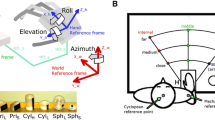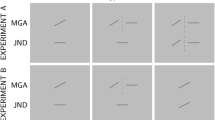Abstract
Human prehension movements have been studied with regard to the parallel processing of motor control and sensorimotor coordination. Temporal aspects of the movement (e.g., onset time and duration) have been studied extensively, while spatial aspects have not been studied systematically. Thus, the purpose of this study was to examine spatiotemporal variability of the transport (wrist trajectory) and grasp (grip aperture between the index finger and the thumb) components. In this experiment, the extrinsic (e.g., distance) and intrinsic object properties (e.g., object size) were manipulated. Subjects were required to pick up an aluminum cylinder as quickly and accurately as possible using the index finger and the thumb. It was found that object size significantly affected both transport and grasp components. Distance mainly affected the transport component. These kinematic results were consistent with the findings of earlier studies. Furthermore, the distribution of mean within-subject variability across normalized movement time for the transport component was not the same as that of the grasp component, suggesting that the different motor control processes exist. The peak amplitudes in variability of the wrist trajectory and the grip aperture were obtained at similar points throughout movement time. Furthermore, the peak of wrist variability depended on distance not object size, while that of aperture variability depended on both distance and object size. These results strongly support the hypothesis that the grasp component is adjusted using dynamic information provided from the transport component as the wrist moves toward the object. We also found that wrist variability converged to the target point, while aperture variability was biphasic: it converged, at least, around the point of maximum aperture in the first phase and then remained constant in the second phase. This result suggests that the two components are under different control processes. We hypothesize that the transport component can be modeled as a single feedforward system, while the grasp component can be divided into two separate mechanisms.
Similar content being viewed by others
Author information
Authors and Affiliations
Additional information
Received: 4 March 1996 / Accepted: 29 January 1997
Rights and permissions
About this article
Cite this article
Kudoh, N., Hattori, M., Numata, N. et al. An analysis of spatiotemporal variability during prehension movements: effects of object size and distance. Exp Brain Res 117, 457–464 (1997). https://doi.org/10.1007/s002210050241
Issue Date:
DOI: https://doi.org/10.1007/s002210050241




